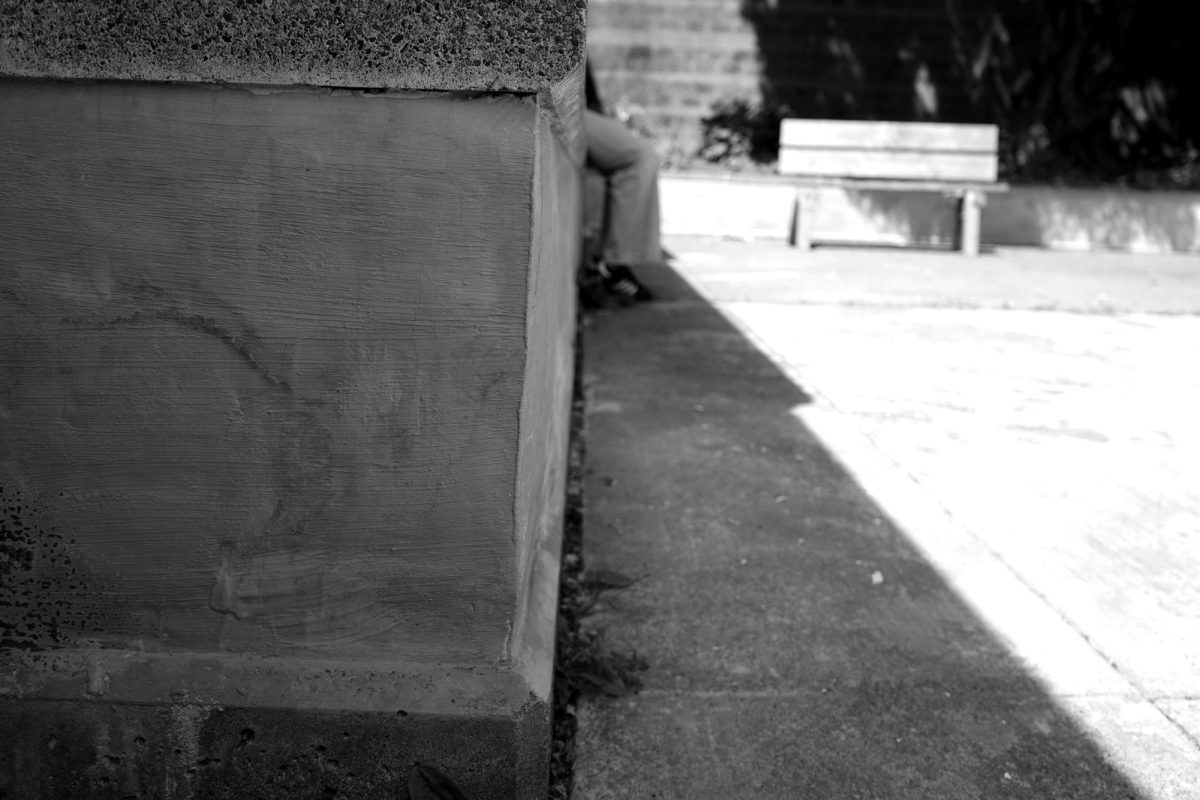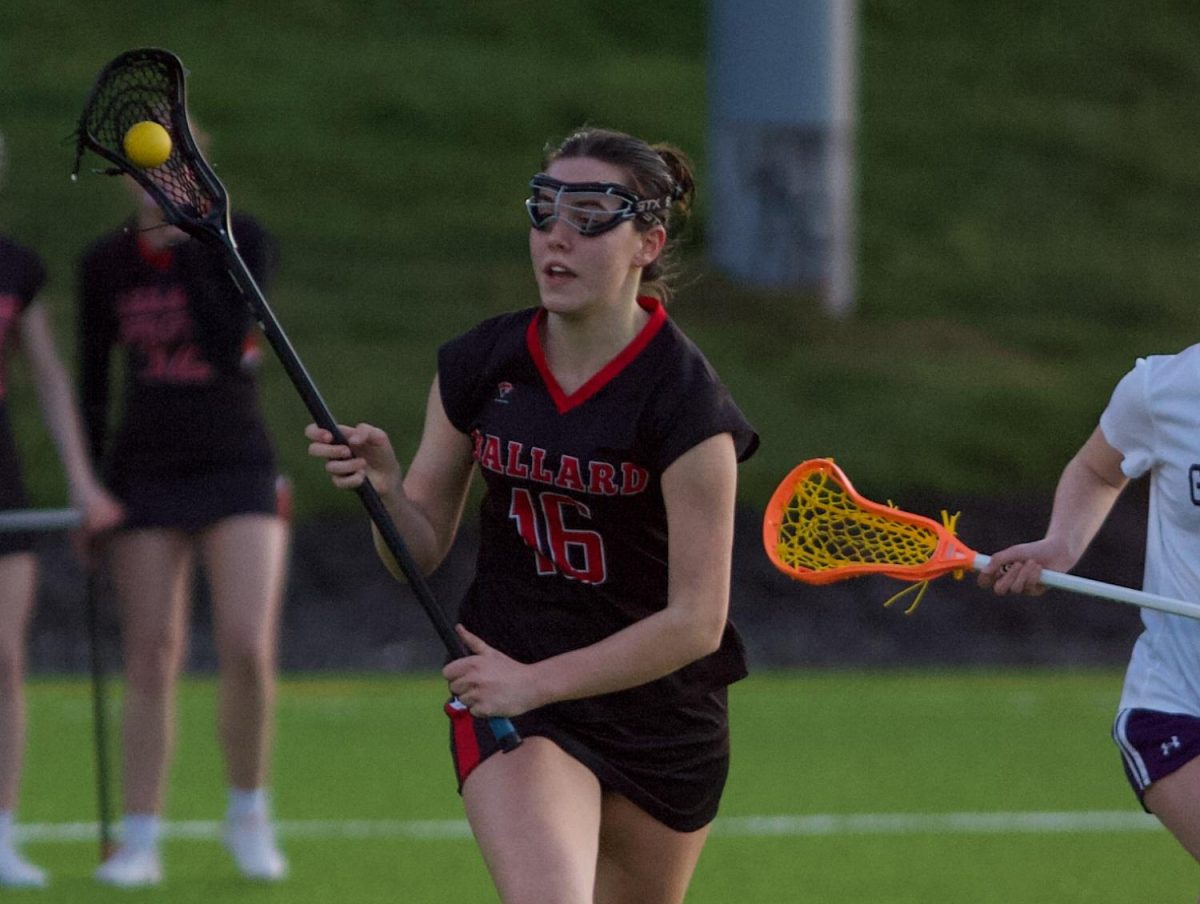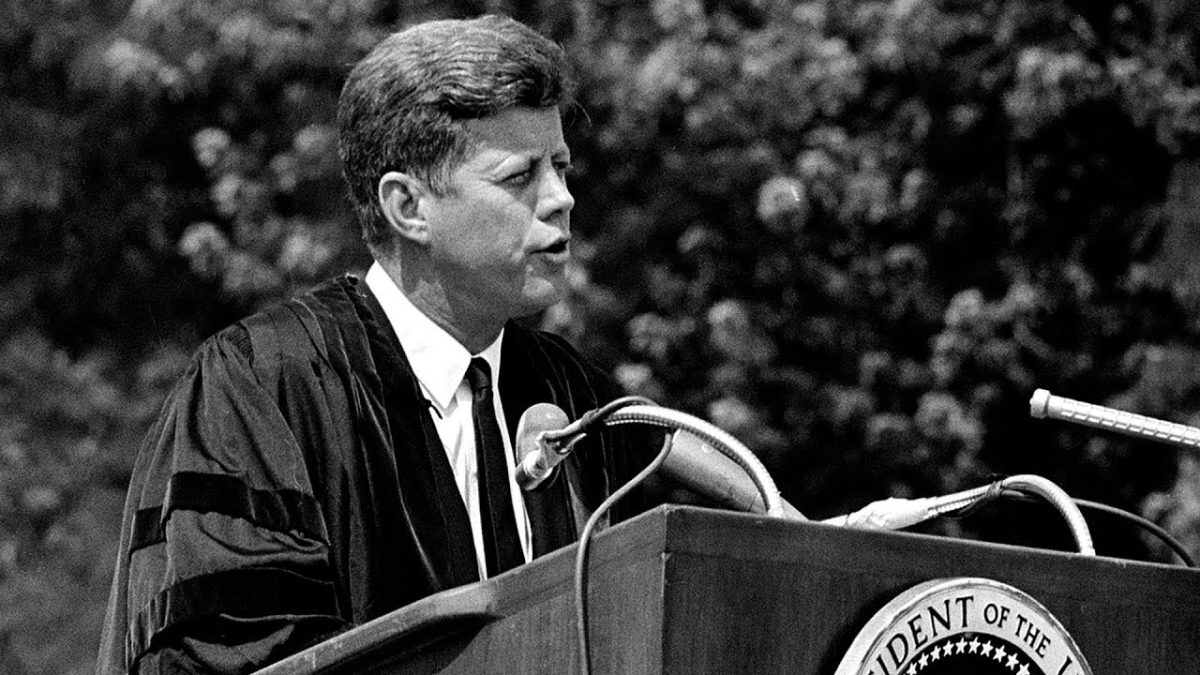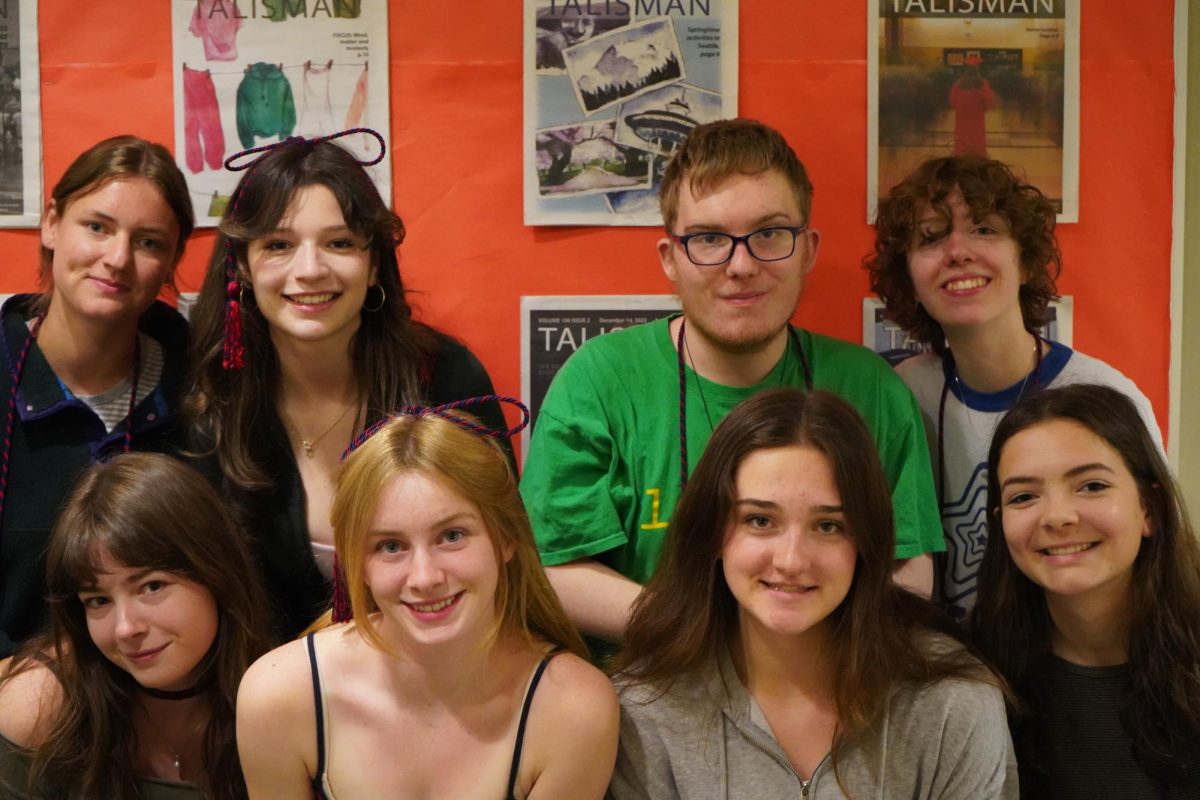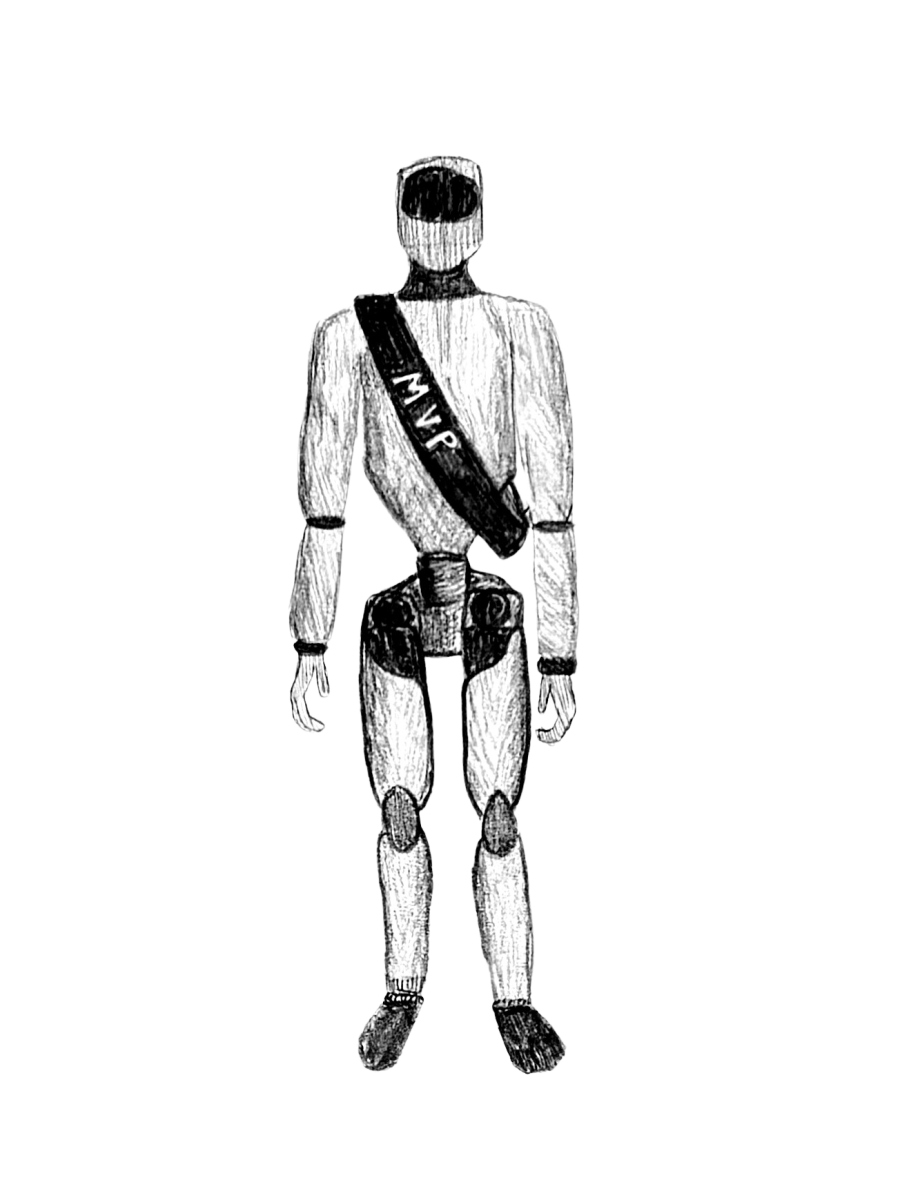Countering racism in high schools: From Homewood-Flossmoor High to BHS
Dhani Srinivasan, Staff Reporter
Originally published May 17, 2019
Samantha Margot
ELA teacher Harpreet Parhar is committed to engaging her students in discussions on race. This is Parhar’s first and last year at Ballard due to the recent budget cuts in the district.
Around 1,000 students walked out of class at Homewood-Flossmoor High School in Illinois on April 30. What they were protesting? A video that showed three white students from the high school wearing blackface had been widely shared amongst students. The school’s student body felt that the administrative response to the racist incident was inadequate, especially in comparison to past disciplinary action against the school’s African American students.
In response to a racist incident within our own school, several Black and brown students created a document to call attention to the administration who, similar to at Homewood-Flossmoor, have been failing to properly address the permissive culture of racism within Ballard. The document clearly outlined the issues faced by Black and brown students as well as multiple ways to properly address them.
I fully applaud the students that created this document but also believe that Black and brown students should not have had to create it in order to elicit a response from the administration.
There are efforts underway in the administration to address some of the needs outlined in the document. This includes attending restorative justice training and continually meeting with students of color in the community. However, our school needs to work on preventing and fixing our culture that has been permissive of racist behavior. In order to confront the root problem, we need to start openly having discussions of race in the classroom and hiring and retaining more teachers of color.
Facing bias head-on
The document (exhibited on pages 12-13) explicitly addresses the need for white teachers to learn how to deal with issues involving race in the classroom. The administrative response to this document includes a commitment to “increased, targeted, professional development for the Ballard staff.”
As vague as that may sound, staff training is needed. It is up to teachers and administrators to openly discuss, not avoid “uncomfortable topics” in order to ward off racism in school, because kids are always going to notice race. Biases are developed in children from a young age, typically from observing parental interactions and also due to the lack of meaningful interaction with other races. Left unchecked, these biases can result in racist beliefs and behaviors that harm students of color.
Principal Keven Wynkoop acknowledges that because our school’s students go to school and live in a predominantly white setting, it is imperative that we are able to address racial discourse.
“An education means more than core academics and increasing the understanding of the dynamics of race in the United States is vital for all students and especially those that live in an area that does not have a great deal of racial diversity,” Wynkoop said, over email.
Addressing racism as an educator
Harpreet Parhar, a 9th and 10th grade ELA teacher, is one of the few teachers of color employed at BHS. She has a unit in her classroom focusing on power in relation to feminism, wealth inequality, leadership and race in order to have deeper conversations within the classroom.
Through these units, Parhar said that she has had to discuss perceptions that her students have such as that all rappers are criminals which is highly problematic considering the majority of rap artists are Black. Even though these discussions may be uncomfortable, they are necessary to dig up the roots of racism. Parhar also used the documentary 13th to dive into how the criminalization of Black men exists structurally within our country, and why said perceptions of rappers can be dangerous.
“I feel like kids just want to learn about what is actually happening,” Parhar said in regards to her curriculum.
In order for our school to be truly anti-racist, we need to become more comfortable with talking about race in the classroom as Parhar is doing. There also needs to be a clearer outline of what racist behavior looks like and how it will be addressed instead of having said behavior “swept under the rug,” as articulated by the document written by combined efforts of our BSU and LHSU. It is important that when addressing problematic behavior, we try to “call in,” a method that promotes a productive solution while still holding people accountable rather than “calling out” which leads to isolation and little growth.
Retaining teachers of color
In addition to continually training all staff on racial discourse and openness to listening and learning, there should be a district effort focused on hiring and supporting teachers of color.
Ballard is trying to implement ways to hire more teachers such as having a question about equity in the interview and having students of color on the hiring boards. However, the current SPS system of hiring prioritizes seniority over new candidates which leaves new teachers of color vulnerable to displacement and uncomfortable workplaces.
Although she was just hired this year, Parhar is being displaced due to a recent round of budget cuts. There needs to be additional measures enacted to protect and support teachers of color, not just hire them.
Teachers of color also provide safe spaces for the school’s minorities. Parhar remembers that during an in-class narrative assignment where students were working on their computers, the students of color tended to gravitate to the area she was located in.
Even though she more easily forms connections with students of color and can more easily speak about racism in the classroom, Parhar feels that all staff need to be trained in issues of race and equity. Just as many students of color might feel might feel isolated in a majority white school, it can often feel the same way for a teacher of color.
Students need to be taught that they will be held responsible for their actions. To do so, we need teachers and administrators that are able to recognize and call in racist behavior as well as show a commitment to hiring and retaining teachers of color. Until this happens, the toxic culture that has been allowed to persist at schools from Homewood- Flossmoor to Ballard will persist.
“I don’t feel like these issues will stop until all teachers start [talking about race in the classroom],” Parhar said.



